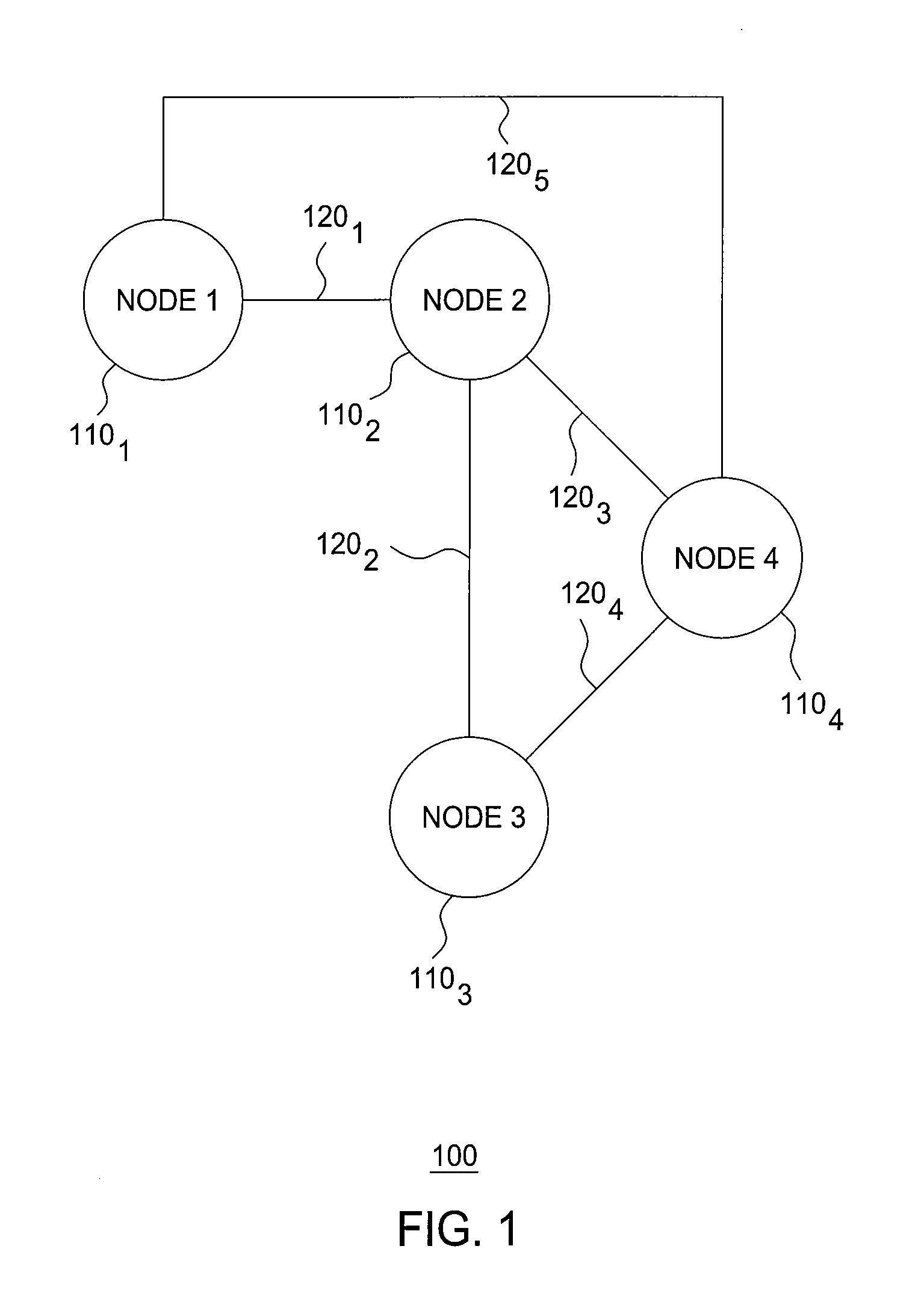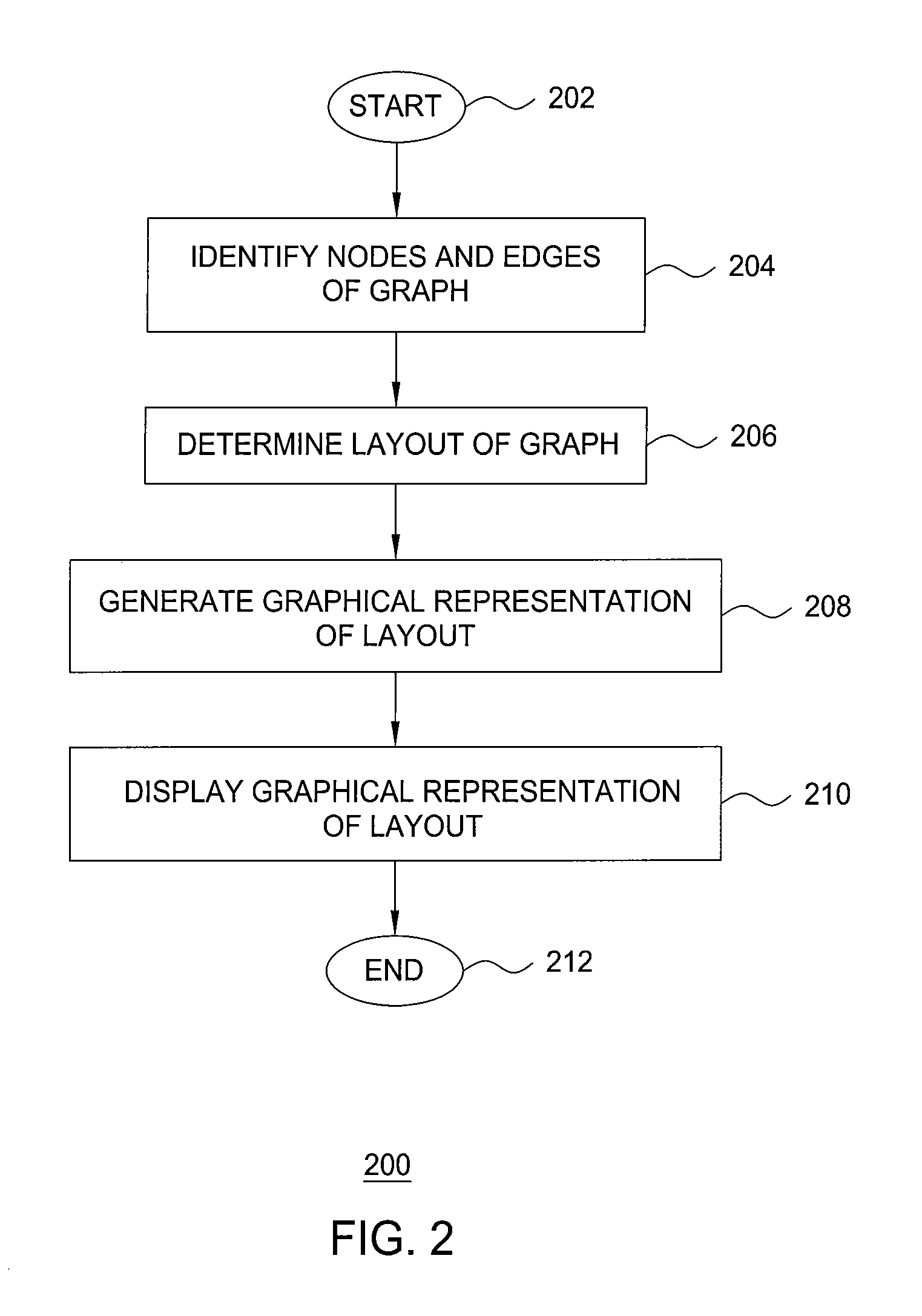Method and apparatus for displaying graphical representations of graph layouts
a graph layout and graph technology, applied in the field of graph layout algorithms, can solve the problems of only good hierarchical and radial layout algorithms, large tables are not easily understood by design engineers, and dynamic updates between tabulars
- Summary
- Abstract
- Description
- Claims
- Application Information
AI Technical Summary
Problems solved by technology
Method used
Image
Examples
Embodiment Construction
[0019]The present invention determines a layout of a graph having a plurality of nodes and a plurality of edges. The layout of the graph is determined by determining respective positions of nodes and respective positions of edges within the layout. In one embodiment, respective positions of the nodes are determined using one or more force models. In one embodiment, respective positions of nodes and respective positions of edges are each determined using one or more force models. A graphical representation of the determined layout of the graph is generated. The graphical representation of the layout of the graph is displayed to one or more users.
[0020]In one embodiment, respective positions of the nodes in the layout of are determined using a repulsive force model for each pair of nodes in the graph and an attractive force model for each pair of nodes in the graph that are connected by an edge. The repulsive force model includes a substantially linear repulsive force in a first regio...
PUM
 Login to View More
Login to View More Abstract
Description
Claims
Application Information
 Login to View More
Login to View More - R&D
- Intellectual Property
- Life Sciences
- Materials
- Tech Scout
- Unparalleled Data Quality
- Higher Quality Content
- 60% Fewer Hallucinations
Browse by: Latest US Patents, China's latest patents, Technical Efficacy Thesaurus, Application Domain, Technology Topic, Popular Technical Reports.
© 2025 PatSnap. All rights reserved.Legal|Privacy policy|Modern Slavery Act Transparency Statement|Sitemap|About US| Contact US: help@patsnap.com



